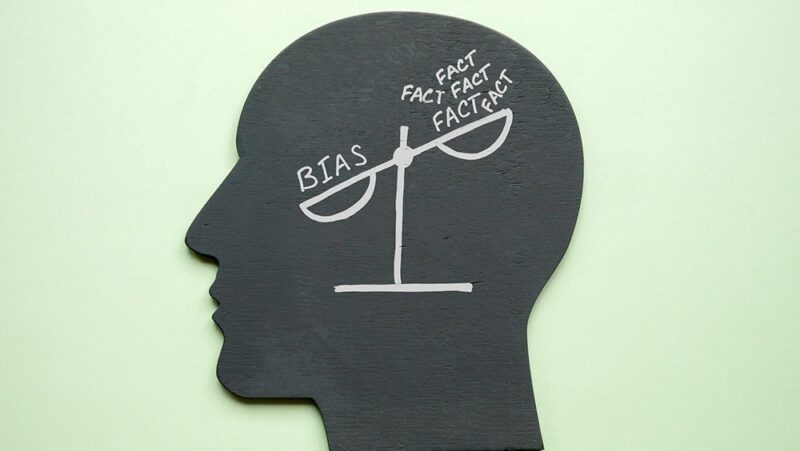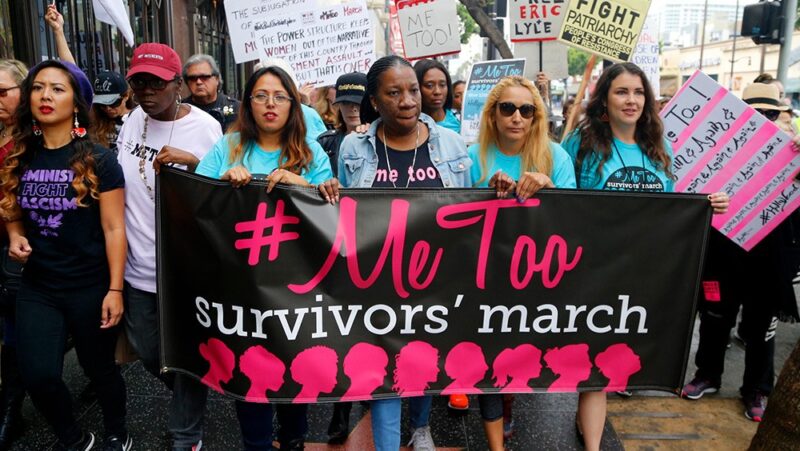Obscenity Examples: 11 Times Pop Culture Got Banned

Kissing is a staple of modern entertainment. But at one time, two people’s lips touching was grounds for movies to be banned or censored.
That’s just one of many examples throughout U.S. history when works of art like movies, books, magazines and songs have been censored for being obscene.
The First Amendment broadly prevents the government from censoring speech, which includes movies, books, art, comedy and live performances.
But obscene materials and performances are not protected by the First Amendment. Defining what is legally obscene has been a moving target throughout U.S. history.
In the late 19th and early 20th centuries, it was common for activities like kissing, swearing and dancing to be labeled “obscene” by government officials. By the mid-1900s, several U.S. Supreme Court cases had narrowed the legal definition of obscenity. As a result, much more entertainment and educational media we see and interact with every day is protected that would have been banned or censored in the not-too-distant past.
Discover 11 obscenity examples from throughout U.S. history
Here are 11 obscenity examples that may remind you that what you now think of as common was once hard, if not nearly impossible, to find.
“Carmencita” (1896)
Calls to ban movies for being obscene started at the same time moving pictures first, well, moved. People could watch the early moving pictures through a Kinetoscope, a sort of 19th century version of today’s virtual reality headsets. By today’s standards, there’s nothing obscene about the 30 seconds of Spanish Vaudeville dancer Carmencita, who the Library of Congress calls “the first woman to appear in front of an Edison motion picture camera.” But the way she twirls, tugs on her skirt and has her ankles exposed while dancing was enough for people and at least one state legislator to call for the footage to be banned as obscene.
“Ulysses” (1922)
James Joyce’s sprawling work is mostly read by college English majors today. In its time, the depictions of sex and profanity were largely considered obscene. Originally a series of short stories in a literary magazine, it was collected in book form in Paris and brought to the U.S. A New York court ruled it was it obscene, but a federal judge said it was not and could be published and distributed, and an appeals court agreed. In ruling in favor of Joyce’s book, the court was incorrect when saying, “It may be that ‘Ulysses’ will not last as a substantial contribution to literature, and it is certainly easy to believe that.”
RELATED: 15 of the most famous banned books in U.S. history
“The Lovers” (1958)
The film isn’t one beloved by millions of people generations beyond its release. But its cultural impact is felt all the time when theater owners show movies. “The Lovers” kicked off a 1964 Supreme Court case. The case centers on an Ohio theater owner, Nico Jacobellis, who showed the movie and was convicted of possessing and distributing obscene materials. At issue was a sex scene at the end of the movie. The Ohio Supreme Court upheld Jacobellis’ conviction, but the U.S. Supreme Court overturned it saying, among other things, (1) a movie aimed at adults shouldn’t be censored because it might be harmful to children, (2) obscenity requires more than just nudity or sexual content, the work needs to go past what society would customarily allow, and (3) a work cannot be obscene unless it is utterly without social importance.
The case yielded a now-famous and oft-quoted line from Justice Potter Stewart: “Under the First and Fourteenth Amendments, criminal laws in this area are constitutionally limited to hard core pornography. I shall not today attempt further to define the kinds of material I understand to be embraced within that shorthand description, and perhaps I could never succeed in intelligibly doing so. But I know it when I see it, and the motion picture involved in this case is not that.”
“Naked Lunch” (1959)
William S. Burroughs’ book started as a series of short stories and was first published as a book in France. Attempts at censorship started when a publisher tried to bring it to the U.S. for publication in 1962. It has explicit depictions of drug use, profanity and same-sex relationships, prompting Massachusetts officials to stop it from being printed for being obscene. A 1966 U.S. Supreme Court decision found books couldn’t be banned as obscene unless they were “utterly without redeeming social value.” That meant “Naked Lunch” and other books could be printed and distributed.
“Louie Louie” (1963)
One of the most unique obscenity examples on this list came in the 1960s when Indiana’s governor asked the State Broadcasters Association to ban the Kingsmen song “Louie Louie” from radio play. Some stations did, believing it was obscene. The song, written by Richard Berry, doesn’t have explicit lyrics, but many people interpreted it as having sexual innuendo. The Kingsmen version included slurred words, and some people believed they heard the f-word in the recording. The band’s drummer said he cursed after dropping a drumstick. The FBI investigated the allegedly obscene lyrics. The result: inconclusive.
Lenny Bruce (1960s)
Lenny Bruce is often called one of most influential stand-up comedians. Many comedians of his time stayed clean, but he openly used profanity and adult themes and social commentary in his sets. That yielded the label of “blue material,” putting him on blacklists and getting him banned from radio and TV. Government censors enforced obscenity laws while in the audience at his performances. In 1961, he was arrested on stage twice in California for using words that government censors said were obscene. In 1964, Bruce was arrested after performances in New York, and convicted of obscenity charges. He was released on bail as the case was appealed and died in 1966 at age 40. He didn’t live to see the governor of New York pardon him in 2003.

Comedian Lenny Bruce makes a V-sign as he leaves the U.S. customs office after returning to New York in 1963. Bruce, in trouble in the U.S. on charges involving narcotics and alleged obscenity in his nightclub act, was detained at the airport for about 75 minutes.
“The Moon is Blue”; “Blue Movie”; “Deep Throat” (1950s – 1970s)
Many lists of obscenity examples and the attempts to censor entertainment center on movies. Movies have been censored for various reasons, though the broad category of obscenity was a common one in past decades. New Jersey officials tried to ban “The Moon is Blue” for being obscene in 1953. “Blue Movie” from boundary-pushing artist Andy Warhol was banned in New York in 1969 for being obscene. “Deep Throat,” a 1972 pornographic movie banned in 23 states, is one of the most famous examples. The film attracted the ire of President Richard Nixon, who said, “So long as I am in the White House, there will be no relaxation in the national effort to control and eliminate smut from our national life.”
Hustler magazine (1977)
On most lists of prominent First Amendment defenders is Larry Flynt, the self-proclaimed “smut peddler.” He launched Hustler magazine in 1974, positioning it as edgier and raunchier than Hugh Hefner’s Playboy. Flynt had other pornographic magazines and faced multiple obscenity charges and cases, the first in Ohio in 1977. He was shot and paralyzed in 1978 while involved in another obscenity case in Georgia. Prominent Christian pastor and Moral Majority leader Jerry Falwell sued Flynt and Hustler for defamation. A court initially ruled in favor of Falwell, but the U.S. Supreme Court reversed it. Flynt, who died in 2021, gained a larger audience of fans following the 1996 movie “The People vs. Larry Flynt” starring Woody Harrelson.
“The Real Slim Shady” (2000)
The most recent obscenity example on this list came in 2000 when the Federal Communications Commission, which regulates broadcast radio and TV, fined two radio stations for playing Eminem’s song “The Real Slim Shady.” The “clean” version, intended for radio, doesn’t have banned words that can’t be broadcast. But the FCC said the rapper’s breakout hit included sexual innuendo not allowed under broadcast rules it had recently updated. The agency later dropped the fine. He recalled the incident in his 2002 follow-up “Without Me”:
“So the FCC won’t let me be
Or let me be me, so let me see
They try to shut me down on MTV
But it feels so empty without me”
Pop culture, obscenity and the First Amendment
If one person’s trash is another person’s treasure, one person’s obscene and profane movie may be another person’s innocent pop culture. That’s the nature of media and entertainment – it’s often a matter of personal taste and preferences.
It’s also a matter of government regulation versus voluntary censorship. The FCC has authority to set standards for broadcast TV and radio. Cable and streaming platforms aren’t subject to FCC regulations, but they have their own standards and ratings systems, which is why they’re more provocative than broadcast.
The film industry also self-censored at one time under a set of internal rules meant to keep government censors at bay. The Motion Picture Production Code, also called the Hays Code, came about in 1930 but the film industry largely abandoned it by the late 1960s.
By today’s standards, much of what was banned as obscene, profane or pornographic in the past is fairly innocent. It’s an example of evolving cultural trends and real changes in First Amendment law stemming from U.S. Supreme Court cases.
In other words, like Thomas Edison’s early movies, the picture on obscenity standards is moving.
Scott A. Leadingham is a Freedom Forum staff writer. Email

